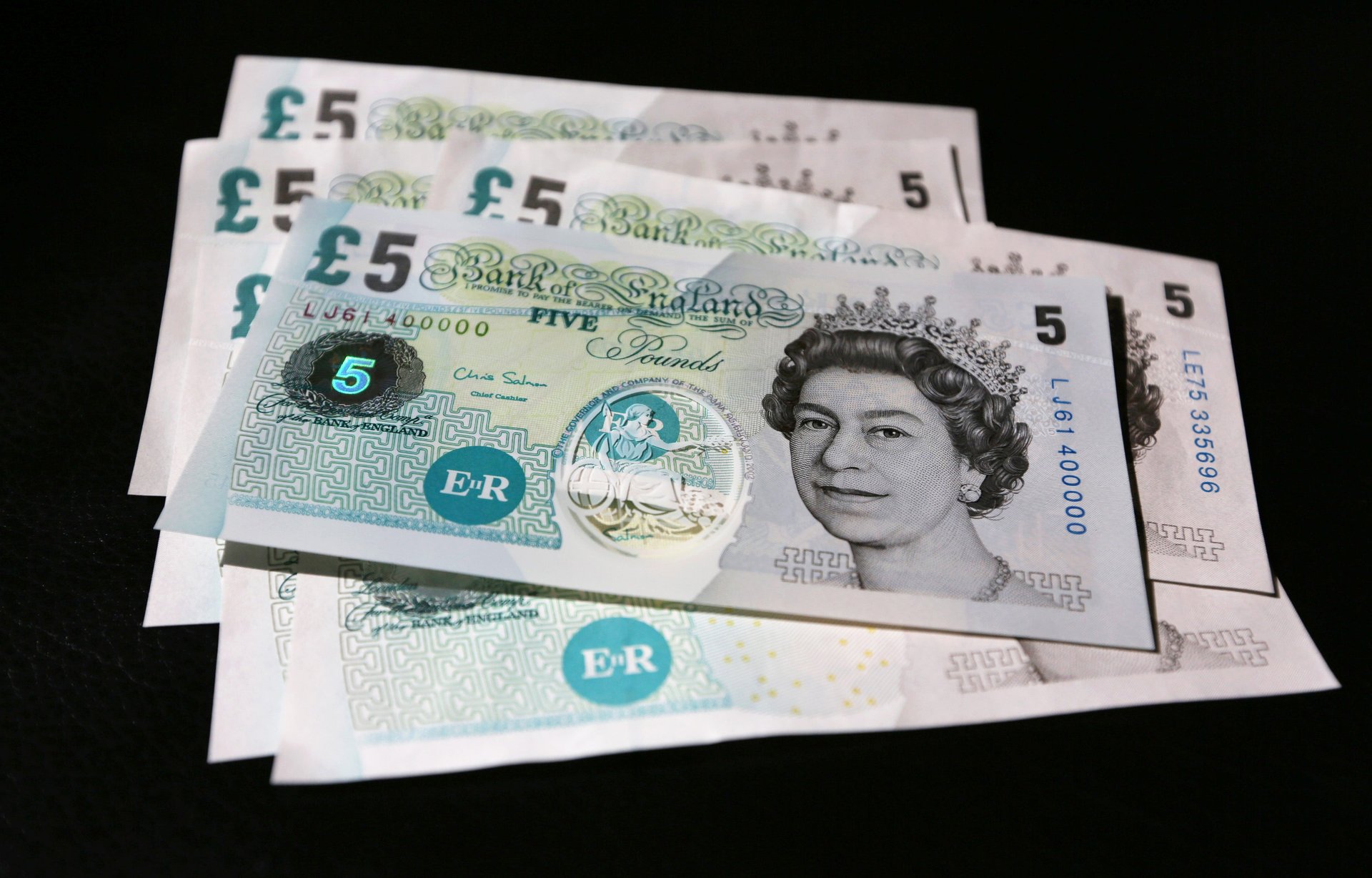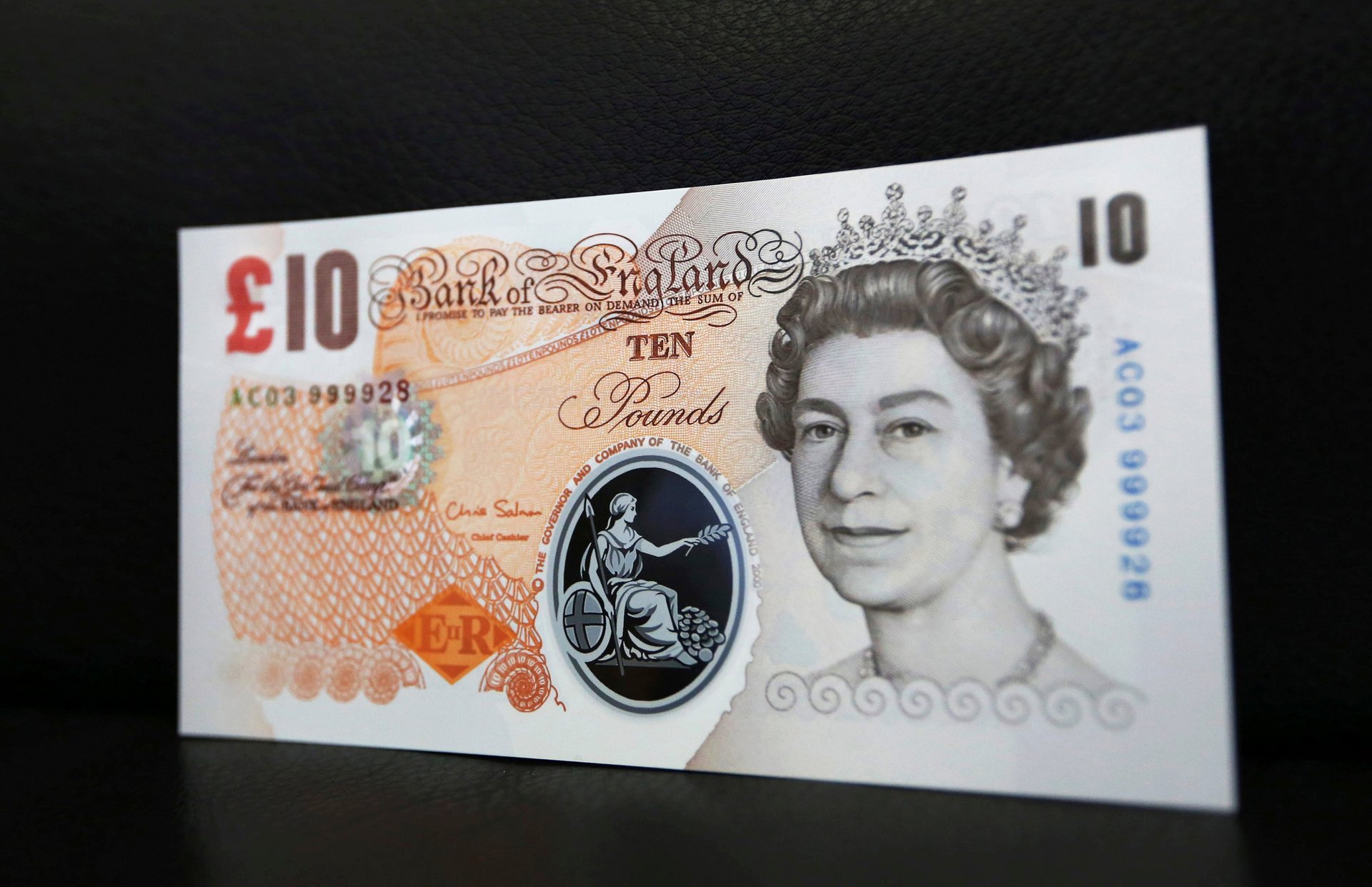Britain’s new plastic banknotes will cost 50% more to make—but at least they’ll fit in your wallet
The age of the cotton-paper banknote is slowly coming to an end. Following in the footsteps of former colonies Australia, New Zealand and Canada, the Bank of England is likely to start introducing polymer banknotes from 2016. Although the final decision won’t be until December, the bank’s deputy governor called the introduction of polymer banknotes a “done deal”, according to the Guardian.


The age of the cotton-paper banknote is slowly coming to an end. Following in the footsteps of former colonies Australia, New Zealand and Canada, the Bank of England is likely to start introducing polymer banknotes from 2016. Although the final decision won’t be until December, the bank’s deputy governor called the introduction of polymer banknotes a “done deal”, according to the Guardian.
The first note to become polymerized will be the £5 note. They will look virtually identical in design to the current paper notes, and, like them, will increase in size with denomination to help the blind. But the material will be thinner than paper, and overall they will be 15% smaller. That will be welcome news to people long frustrated by the British currency’s annoying tendency to stick out of wallets and get its edges crumpled.
And while the new banknotes will cost 50% more to make, the BoE estimates they will save £100m ($157 million) in printing costs over a ten-year period, because they’ll be twice as durable as paper and should be able to survive, for example, an accidental visit to a washing machine. The bank estimates that it currently spends about £35-40 million a year on replacing notes in circulation.
Regardless, some will be worried about the future of the currency, especially given Canada’s experience. In addition to some complaints about banknotes sticking to each other, some residents there complained that the notes tended to shrivel up and melt in high temperatures (such as next to a toaster). The Bank of England has said that, according to its tests, the new polymer notes will not melt until at least 120°C (248°F).
Here is what the new notes will look like:

